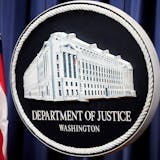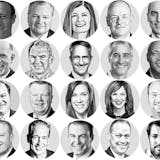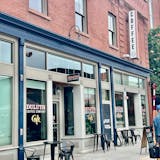Opinion editor’s note: Strib Voices publishes a mix of guest commentaries online and in print each day. To contribute, click here.
•••
Jimmy Carter, who started out his road to the White House as “Jimmy Who?” in Iowa, popped up a few times during my 50-year jo urnalism career, the final time as an elder statesman and a personable, charming ex-president at Minnesota Public Radio’s St. Paul studios. But before that, the nation’s 39th president, who died Sunday at his home in Plains, Ga., at 100, accounted for one of the most exciting, but scary, moments I could imagine.
I was a young United Press International reporter in Des Moines in 1976 when the former Georgia governor campaigned all over the Hawkeye State. I would answer the bureau phone and hear press secretary Jody Powell calling to give a report on Carter’s campaign schedule.
I was in the bureau the night of the Iowa caucuses when Carter “won.” Well, he didn’t really win. He came in second to “uncommitted,” but the press needed a winner, so the title went to the Georgia peanut farmer. And from there, Carter became the Democratic nominee for president and beat President Gerald Ford that November.
In 1978, I was transferred to Illinois to open a UPI bureau in Champaign-Urbana. In 1979, the Carter family vacationed on a seven-day trip down the Mississippi River on the riverboat Delta Queen from St. Paul, with stops in Wabasha and other small river towns, to St. Louis. I was assigned to help cover the trip. On their way south, the Carters stopped in Davenport in the Quad Cities, where they had spent time during the 1976 campaign. From there, Carter was scheduled to cross the Mississippi to Moline, Ill., to visit John Deere headquarters to talk energy.
As the motorcade was getting ready to cross the bridge, UPI’s White House correspondent came up to me and asked whether I wanted to cover the trip to Moline. I said yes, and he handed me his credentials, which I put over my head. Today, the Secret Service would never tolerate such a security breach.
Quite nervous about my new assignment, I got into the front seat of “Wire 2.” In the back seat were TV news legends Lesley Stahl, Judy Woodruff and Sam Donaldson. “Who are you?” they asked.



